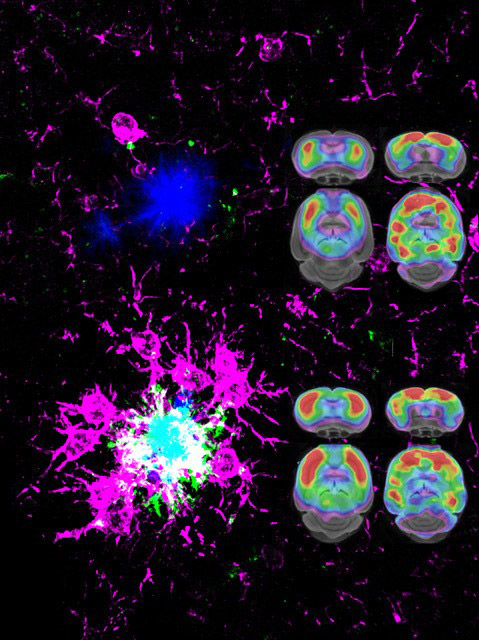Loss of TREM2 function increases amyloid seeding but reduces plaque-associated ApoE
Nat Neurosci. 2019 Feb;22(2):191-204
| Authors/Editors: |
Samira Parhizkar Thomas Arzberger Matthias Brendel Gernot Kleinberger Maximilian Deussing Carola Focke Brigitte Nuscher Monica Xiong Alireza Ghasemigharagoz Natalie Katzmarski Susanne Krasemann Stefan F. Lichtenthaler Stephan A. Müller Alessio Colombo Laura Sebastian Monasor Sabina Tahirovic Jochen Herms Michael Willem Nadine Pettkus Oleg Butovsky Peter Bartenstein Dieter Edbauer Axel Rominger Ali Ertürk Stefan A. Grathwohl Jonas J. Neher David M. Holtzman Melanie Meyer-Luehmann Christian Haass |
|---|---|
| Publication Date: | 2019 |
| Type of Publication: | Journal Article |

Coding variants in the triggering receptor expressed on myeloid cells 2 (TREM2) are associated with late-onset Alzheimer’s disease (AD). We demonstrate that amyloid plaque seeding is increased in the absence of functional Trem2. Increased seeding is accompanied by decreased microglial clustering around newly seeded plaques and reduced plaque-associated apolipoprotein E (ApoE). Reduced ApoE deposition in plaques is also observed in brains of AD patients carrying TREM2 coding variants. Proteomic analyses and microglia depletion experiments revealed microglia as one origin of plaque-associated ApoE. Longitudinal amyloid small animal positron emission tomography demonstrates accelerated amyloidogenesis in Trem2 loss of-function mutants at early stages, which progressed at a lower rate with aging. These findings suggest that in the absence of functional Trem2, early amyloidogenesis is accelerated due to reduced phagocytic clearance of amyloid seeds despite reduced plaque-associated ApoE.



